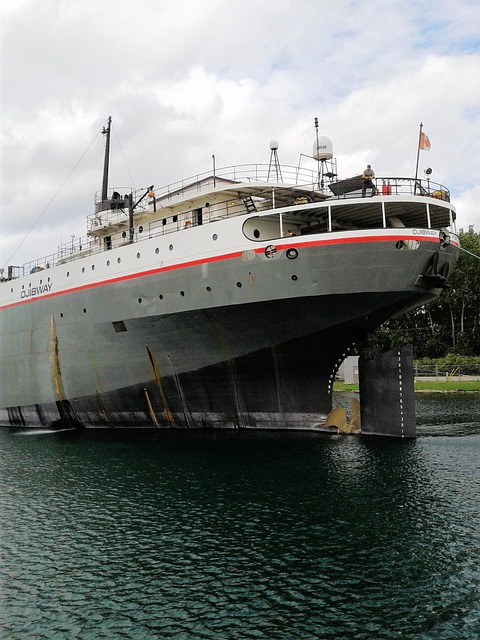Understanding car shipping timelines is crucial for planning and managing expectations when transporting oversized vehicles. Key factors influencing delivery speed include distance, transportation mode, weather conditions, traffic congestion, port delays (for international shipping), and the efficiency of the shipping company's operations. Average ground shipping times vary from 3-7 days for cross-country trips to 1-2 days for shorter hauls. Specialized carriers with optimized routes and equipment offer faster delivery. Peak seasons and complex shipments may cause delays, so planning ahead and inquiring about wait times is essential. Advanced mapping tools and robust communication protocols help carriers optimize routes and ensure on-time delivery of oversized vehicles.
In today’s fast-paced world, shipping oversized vehicles efficiently is paramount. Whether moving a classic car across countries or transporting heavy machinery, understanding car shipping timelines is crucial. This article delves into the factors influencing delivery speed and provides insights on setting realistic expectations. We explore average shipping timeframes for diverse scenarios and offer strategies to optimize delivery schedules, ensuring on-time arrival of your valuable cargo.
- Understanding Car Shipping Timelines: Factors Influencing Delivery Speed
- Setting Realistic Expectations: Average Shipping Timeframes for Different Scenarios
- Optimizing Delivery Schedules: Strategies to Expedite and Ensure On-Time Delivery
Understanding Car Shipping Timelines: Factors Influencing Delivery Speed

Understanding Car Shipping Timelines: Factors Influencing Delivery Speed
When it comes to shipping oversized vehicles, such as cars, understanding the timeline is crucial for setting expectations and planning accordingly. The delivery speed largely depends on several factors that can impact the overall transit time. One of the primary considerations is the distance between the pickup and destination locations. Longer routes typically take more time, especially when navigating through heavily congested areas or challenging terrain.
Another significant factor is the mode of transportation chosen for the car shipping process. Different methods like truck freight, rail transport, or even maritime shipping have varying speeds and efficiencies. Additionally, weather conditions can play a role in delaying shipments, as adverse weather may disrupt schedules and increase travel times. Furthermore, factors like traffic congestion, port delays (in the case of international shipping), and the efficiency of the shipping company’s operations can all contribute to variations in delivery speed.
Setting Realistic Expectations: Average Shipping Timeframes for Different Scenarios

When shipping oversized vehicles, understanding average shipping timelines is crucial for setting realistic expectations. The time it takes to transport a vehicle can vary significantly based on several factors, including distance, size and weight of the vehicle, route taken, weather conditions, and the carrier’s experience and reputation. For standard ground shipping, across-country trips can take anywhere from 3 to 7 days, while shorter hauls might only require 1 to 2 days.
Specialized carriers for oversized or heavy loads often have dedicated routes and equipment, which can speed up delivery times. These professionals are well-versed in navigating logistical challenges, such as permitting procedures for wide or tall vehicles, and handling unique transport requirements. Remember that during peak seasons or for complex shipments, these timelines may increase, so it’s essential to inquire about potential delays and allow for extra time when planning your vehicle shipping needs.
Optimizing Delivery Schedules: Strategies to Expedite and Ensure On-Time Delivery

In the world of car shipping, efficient delivery schedules are paramount, especially when it comes to oversized vehicles that demand meticulous handling and planning. To ensure on-time delivery, carriers employ innovative strategies tailored to streamline the process. One key approach is optimizing routes by utilizing advanced mapping tools, which factor in real-time traffic data, weather conditions, and specific vehicle dimensions to plot the most efficient paths. This not only reduces travel time but also minimizes the risk of delays caused by unforeseen obstacles.
Additionally, carriers often implement robust communication protocols, keeping all stakeholders—from shippers to drivers—informated throughout the journey. Regular updates on shipping status, potential hold-ups, and estimated arrival times foster transparency and enable proactive measures. For specialized shipments, such as oversized vehicles, these strategies become even more critical, ensuring that every step is carefully executed to expedite delivery and meet client expectations.
When shipping oversized vehicles, understanding timelines and optimizing delivery schedules are key to a successful process. By considering various factors and employing strategic techniques, you can ensure on-time arrivals and set realistic expectations for your journey. Remember, prompt communication and planning are essential to navigating the complexities of car shipping, allowing you to avoid delays and embrace efficient transportation solutions.
